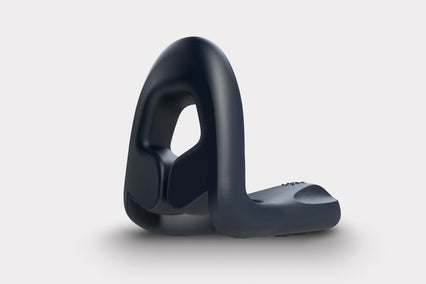As the feminist Carol Hanisch first said in 1969, “the personal is political”, and few places are more personal than what’s going on in your pants. That’s right – we’re talking about the politics of pubic hair trends.
Do you wax, trim, or leave it free and natural? Well, whatever you decide to do to your pubes is a conscious choice on your part. Nevertheless, it is difficult to avoid the stereotypes that are associated with that choice.
Shave it off? You’re brainwashed by society that tells you pubic hair is “gross”.
Don’t touch it at all? You’re making a political statement about our culture’s warped notions of what is sexually appealing.
Whilst we are living in an age when everything from plastic straws to what brand of clothing you wear is politicised, has pubic hair always been so controversial?
The short answer seems to be no.
A Trimmed History of Pubic Hair
Until the early 1990s, the norm for pubic hair was to leave everything au natural.
According to a 2011 study by Vanessa Schick on pubic hair preferences of Playboy centrefolds from 1953-2007, the vast majority of models left their pubic hair unaltered until at least the 1990s. This was when around 30% began trimming or otherwise altering their pubic hair.
The more modern phenomenon of completing removing all pubic hair only became prevalent in the 2000s, with about a quarter of the models choosing to go completely bare (and less than 10% of the models sporting the full bush that was so popular twenty years before).
What led to this sudden desire to remove all of our pubes?
A couple of theories have been put forward, the most widely accepted being the rise in internet pornography at around the same time. In order to get the best view of their genitals on camera, porn stars began removing their pubic hair.
The sudden, constant availability of pornography via the internet meant that people were suddenly inundated with images of hairless vulvas and began replicating this themselves – sexual fantasy becoming sexual reality.
There is also an urban legend that the modern popularity of the Brazilian wax began in New York at the J Sisters salon. The sisters began offering the service in 1987, but it didn’t take off until 2000, when a Brazilian wax plotline featured heavily on an episode of Sex and the City, causing Carrie to feel like ‘walking sex’.
Perhaps it is this association of hairless genitalia with increased sexuality that has led to the widespread popularity of shaving or otherwise removing pubic hair.
Advocates of the ‘bare down there’ look claim that it heightens sensation and allows you to feel ‘everything’.
Eva Longoria once said to Cosmopolitan in 2006:
“Every woman should try a Brazilian wax once. The sex they have afterward will make them keep coming back.”
Other people claim that having no pubic hair makes them feel cleaner, and therefore more confident when engaging in sexual acts.
However, this study found a positive correlation between people who shave and those with a history of self-reported STIs.
So, remember to use protection during sex, as they can also be contracted during oral sex. Get the Facts highlights that you should also be aware that:
“Condoms are 98% effective at protecting against most STIs like chlamydia and gonorrhoea. However, condoms don’t protect you from all STIs such as herpes, genital warts and syphilis which can be spread from skin-to-skin contact.”
To anyone who has ever waxed, or shaved, or removed their pubic hair in any way, you know it can be a painful, arduous task. Ingrown hairs, shaving rash and the sheer pain of waxing are enough to make anyone pause for a second before going bare down there.
This is where it starts to get political…
Caitlin Moran says in an interview with The Hairpin in 2012:
“It’s just the fact that that seems normal now, and I feel that anything that’s normal that involves pain and costs a lot of money that boys aren’t doing is something that I would really urgently want to have some kind of massive fucking inquest into.”
Whilst this sort of binary language is something that we try and avoid at MysteryVibe, several studies including one by Terry and Braun in 2013 found that in general people who identify as male report feeling entitled to a wider range of pubic hair styles. They feel less pressure to conform to one specific standard.
Whereas a study by Butler et al in 2015 found that 95% of people who identified as female reported having removed their pubic hair in some shape or form.
Of course, there is nothing wrong with pubic hair removal, particularly if it’s how you feel most comfortable.
So, what’s the issue with pubic hair removal?
The issue arises when people feel pressured (either by society or by their peers) into doing something that they don’t necessarily want to do.
The good news is, we seem to be becoming more aware of these subconscious pressures – in a 2017 study by Terry et al, many of the participants talk about the desire to ‘resist the hairless ideal’ and the fact that they realise that they are ‘conforming to a misguided idea of what is normal and resent that’.
This, combined with the fact that it is gradually becoming less taboo to discuss sex and sexuality in an everyday setting, means that hopefully in the near future everyone will feel comfortable doing whatever they want with their pubic hair.
Because in the end, isn’t choice the sexiest thing of all?









































